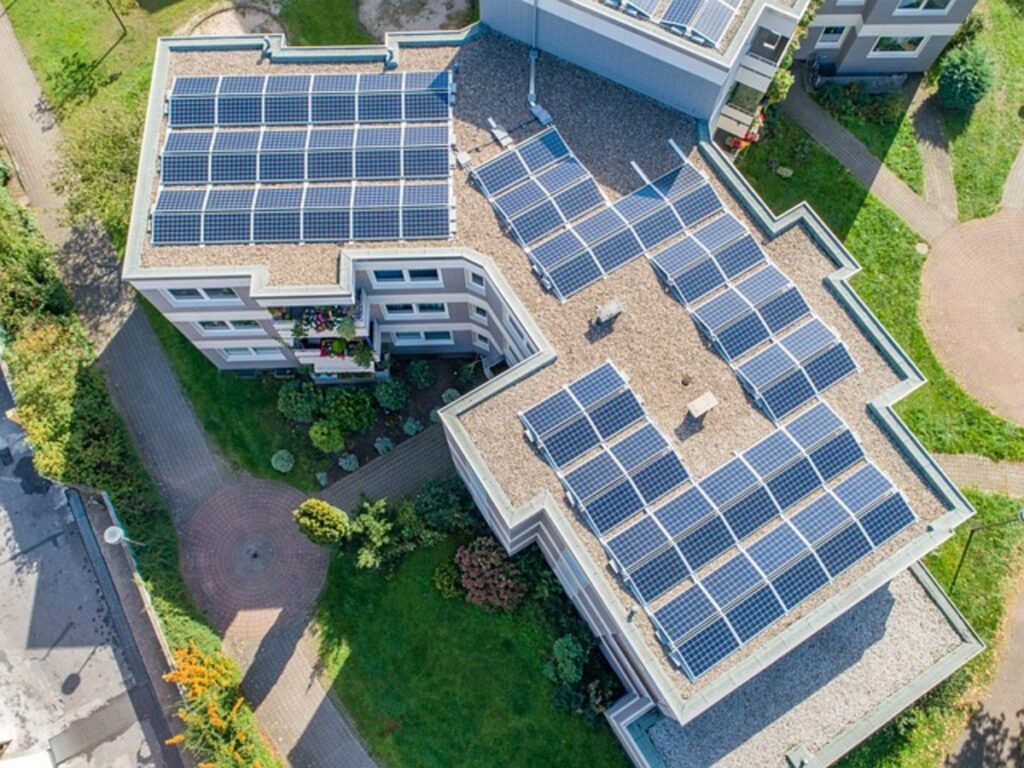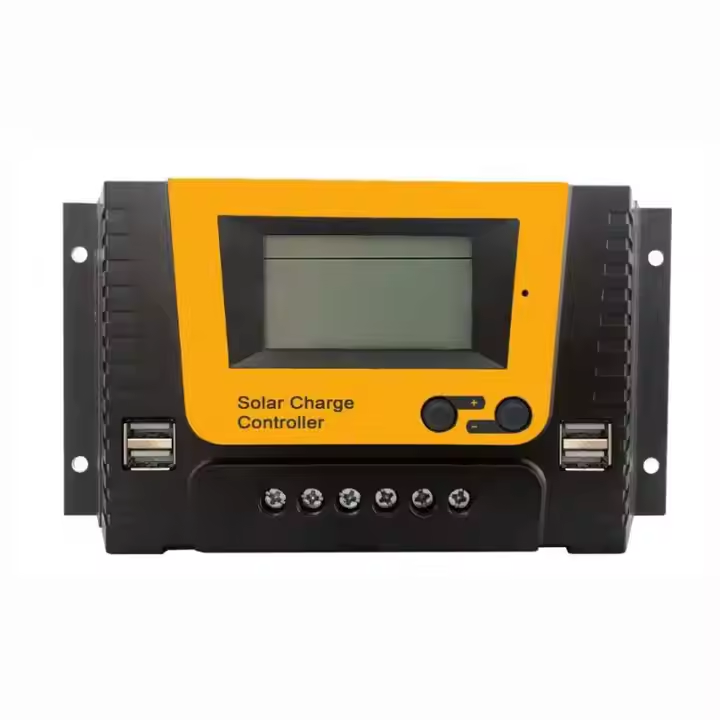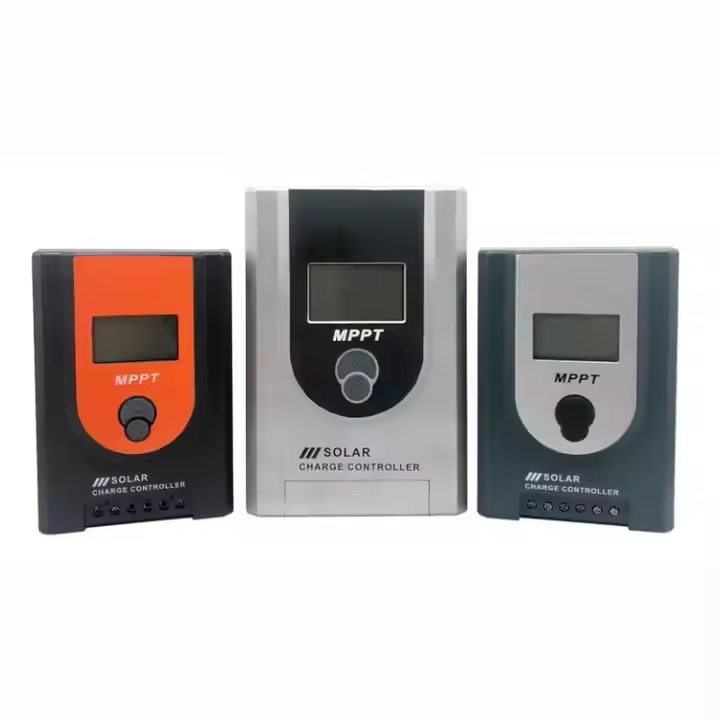I. Introduction
In today’s rapidly evolving renewable energy landscape, achieving optimal energy efficiency in solar home systems is paramount. Solar charge controllers and hybrid inverters are two critical components in any solar power installation. While solar controllers regulate the energy flow from solar panels to batteries, hybrid inverters convert the stored direct current (DC) into usable alternating current (AC) while managing grid connectivity and backup power. This article explains how integrating these two components not only enhances system efficiency but also optimizes performance for sustainable energy use. In doing so, we address common challenges, offer actionable best practices, and provide industry-relevant insights that can help solar energy professionals and system integrators achieve superior energy management.
II. Understanding the Components
A. Solar Charge Controllers
A solar charge controller is the heart of a solar energy system that regulates the charging process of the battery bank. Its primary functions include:
Preventing Reverse Current Flow: At night or during low-light conditions, the controller disconnects the solar panels from the battery to avoid energy drain.
Voltage and Current Regulation: It maintains voltage levels within a safe range to ensure efficient charging and battery protection.
Battery Protection: It prevents overcharge and deep discharge, prolonging battery life and safeguarding system integrity.
There are two main types:
PWM (Pulse Width Modulation) Controllers: Economical and suitable for simple, small-scale systems.
MPPT (Maximum Power Point Tracking) Controllers: More efficient, especially in larger or complex installations, as they maximize energy extraction even under variable sunlight.
B. Hybrid Inverters
A hybrid inverter combines the functions of a grid-tied inverter with the capability to manage a battery storage system. Key functions include:
DC to AC Conversion: Converts the DC energy from the battery bank into AC power for household use.
Energy Management: Supports both solar energy generation and battery storage, enabling seamless switching between grid-connected and off-grid scenarios.
Bidirectional Flow: Facilitates energy export to the grid when production exceeds consumption and ensures backup power during outages.
Hybrid inverters offer distinct advantages such as improved system flexibility, enhanced integration with energy storage, and better overall energy efficiency.
III. The Concept of System Integration
A. Why Integration Matters
Integrating solar charge controllers with hybrid inverters plays a pivotal role in overall system performance. By combining these components, you create a unified energy management system that:
Optimizes Energy Flow: Ensures maximum energy harvesting and efficient power conversion.
Enhances System Reliability: Reduces downtime and safeguards against power fluctuations.
Simplifies Management: Offers centralized monitoring and control, making maintenance and troubleshooting easier.
B. How They Complement Each Other
Solar controllers fine-tune the charging of your battery bank by adjusting voltage and current levels, while hybrid inverters efficiently convert and manage the stored energy for AC loads and grid support. Together, they create a system where energy is continuously optimized—excess solar energy is captured, stored securely, and then efficiently converted for usage, resulting in minimal waste and improved efficiency across the entire solar energy system.
IV. Key Considerations for Integration
A. System Compatibility and Specifications
Voltage and Current Matching: Ensure that the solar panels, battery bank, charge controller, and inverter share compatible voltage levels and current ratings. Mismatches can lead to inefficiencies or system failures.
Scalability: Consider future expansion needs. A modular design that allows easy upgrades can be beneficial as energy demands increase.
B. Communication and Monitoring Features
Integrated Monitoring: Choose devices with built-in displays or remote monitoring capabilities to track performance in real-time.
Data Logging: The ability to log and analyze historical data enables proactive troubleshooting and system optimization.
Smart Connectivity: Features like Wi-Fi, Bluetooth, or proprietary communication interfaces facilitate seamless integration between the controller and the hybrid inverter.
C. Configurable Settings
Low Voltage Disconnect (LVD): Adjustable LVD settings prevent deep discharges, ensuring battery longevity.
Programmability: Customizable parameters allow fine-tuning of charging and discharging cycles to suit specific system needs.
D. Environmental and Durability Considerations
Operating Temperature Range: The selected equipment should function reliably under local climatic conditions, especially in regions with high temperatures.
Ingress Protection (IP Rating): A higher IP rating ensures that the devices can withstand dust, moisture, and other environmental challenges.
E. Brand Reputation and Support
Warranty and Customer Support: Prioritize products with comprehensive warranties and reliable after-sales service.
User Reviews and Certifications: Positive industry reviews and certifications are strong indicators of product quality and long-term reliability.
V. Best Practices for Integration
A. Optimal System Design
Modular Layout: Design your system layout in a way that facilitates easy integration and future upgrades.
Proper Sizing: Accurately calculate your energy needs and match the capacity of your solar array and battery storage accordingly, ensuring that your charge controller and hybrid inverter are neither under- nor over-sized.
B. Installation Procedures
Secure Wiring and Connections: Always check that wiring is correctly connected and secure, paying close attention to proper polarity to avoid system malfunctions.
Environment Considerations: Mount devices in locations that provide adequate ventilation and protection from extreme weather.
C. Regular Maintenance and Troubleshooting
Routine Checks: Schedule periodic inspections of wiring, battery voltage, and device settings to catch potential issues before they escalate.
Troubleshooting Guides: Keep a troubleshooting checklist handy to address common problems such as intermittent power loss, inaccurate readings, or overheating issues.
VI. Case Studies and Real-World Examples
Example 1: Residential Installation
A residential solar system in a high-temperature region implemented an MPPT charge controller integrated with a hybrid inverter. This configuration increased energy harvesting by 20%, improved battery lifespan, and provided a stable AC supply despite fluctuating solar intensity.
Example 2: Community Solar Project
In a community solar project, optimizing the LVD settings on the solar controller prevented battery deep discharge during prolonged cloudy days. The seamless integration with the hybrid inverter enabled continuous power supply for critical community services during peak demand.
VII. Conclusion
Integrating solar charge controllers with hybrid inverters is key to maximizing energy efficiency in a solar home system. By carefully considering system compatibility, utilizing advanced communication features, and optimizing installation and maintenance procedures, you can significantly enhance the performance and reliability of your renewable energy installation. For industry professionals striving for sustainable, efficient energy solutions, adopting this integrated approach is a proven strategy for long-term success.
VIII. Frequently Asked Questions (FAQs)
What are the main differences between PWM and MPPT charge controllers?
MPPT controllers offer higher efficiency and better performance in variable sunlight conditions compared to PWM controllers, which are generally more cost-effective for smaller systems.How do I ensure compatibility between my solar panels, charge controller, and hybrid inverter?
Check that all components have matching voltage and current ratings according to manufacturer specifications. Proper calculation during the system design phase is critical.How can I monitor the performance of an integrated system?
Look for equipment with integrated monitoring systems that provide real-time data and historical performance tracking. Smart connectivity options enable remote access to system metrics.What maintenance practices help ensure long-term efficiency?
Regularly inspect wiring, verify battery voltages, and check that configurable settings like LVD remain optimized. Routine maintenance minimizes downtime and maximizes system longevity.





